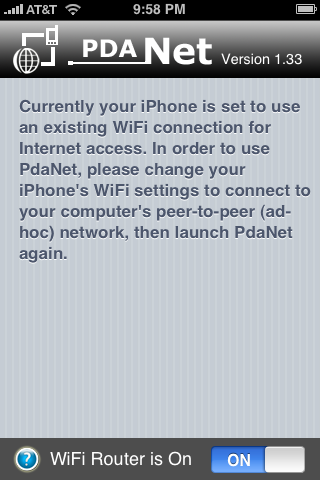

You can only tether one device at a time via Bluetooth as well. Bluetooth Tethering: Bluetooth tethering is significantly slower than Wi-Fi, but uses less battery.

It has decent speeds and you can connect more than one device-but the battery will drain faster than if you used one of the below options. It creates a Wi-Fi network that you connect to with your computer. Wi-Fi Tethering: Wi-Fi tethering turns your phone into a little Wi-Fi hotspot.
PDANET WIFI SHARE WINDOWS 10 HOW TO
We’ll cover how to use each tethering method. Lastly, tethering drains battery-fast. When not actively using tethering, you should disable it to save power on your Android phone and keep its battery going longer. For example, if your carrier provides 2GB of data per month and you use 3GB between tethering and your normal smartphone usage, you’ll be subject to your plan’s normal penalties-extra charges or speed throttling-even if the carrier doesn’t notice you’re tethering. Of course, standard data limits and charges apply. If you’re lucky, they may not notice, just don’t be surprised if they make you pay the tethering fee. However, your carrier may notice you’re tethering anyway - they can tell because web traffic from your laptop looks different from web traffic from your mobile phone-and they may helpfully add a tethering plan to your account, charging you the standard tethering fee.

It’s possible to get around these restrictions by installing and using a third-party tethering app, or if you’re rooted, unblocking Android’s built-in tethering feature. RELATED: How to Use Android's Built-In Tethering When Your Carrier Blocks It An additional $20 fee to tether isn’t unusual in the USA. In the US, most major carriers charge extra for tethering. Consult your carrier’s website for more information about what they charge for tethering. Depending on your carrier, this may or may not cost you money.


 0 kommentar(er)
0 kommentar(er)
